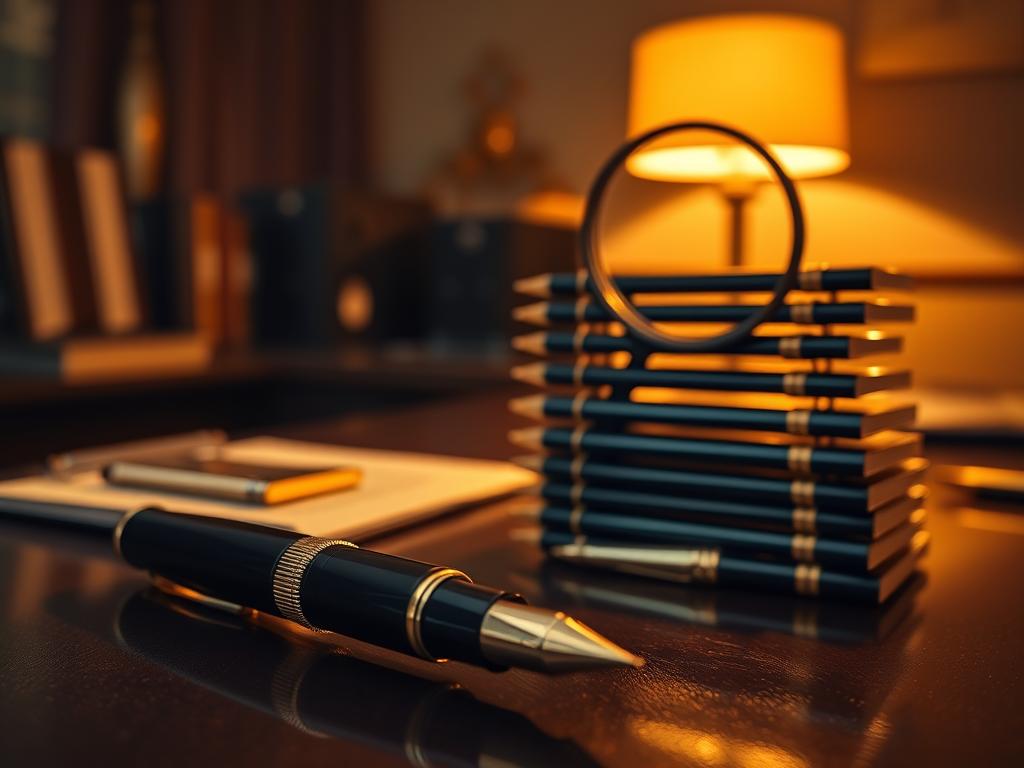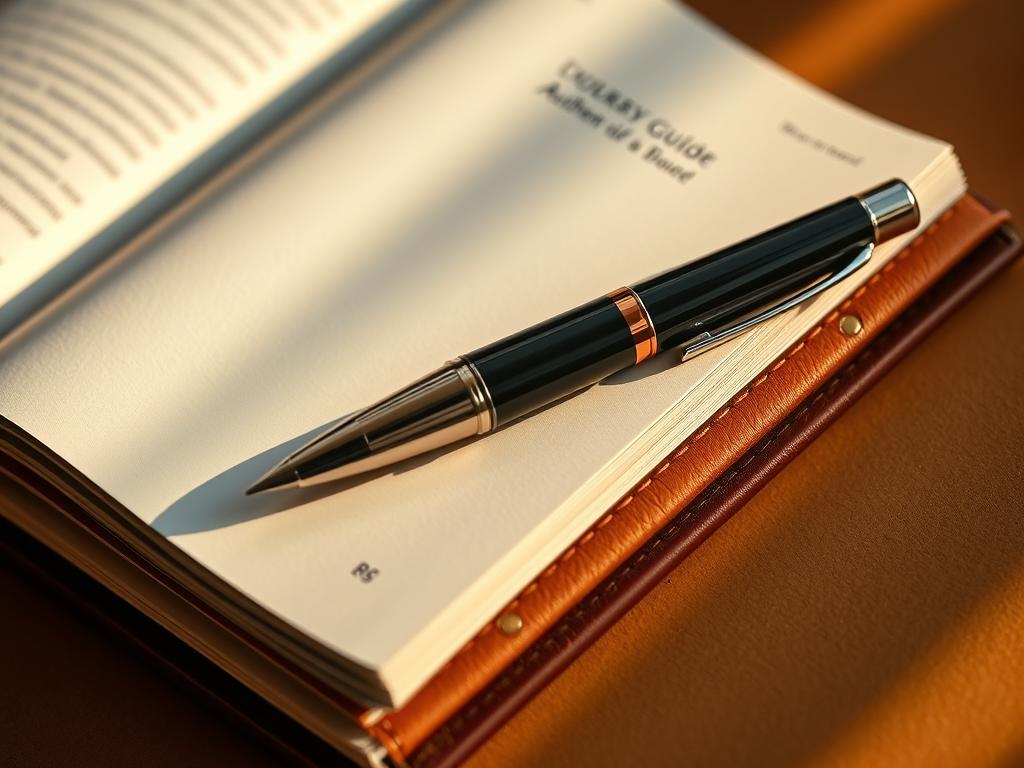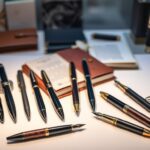In today’s market, discerning genuine craftsmanship from imitation requires careful attention. Brands like Montblanc set industry standards with their meticulous designs, such as the Meisterstück Classique fountain pen featuring a gold nib and precise engravings. These details matter – especially when $1.03 billion in counterfeit goods were seized in the US last year alone.
Authentic Montblanc products include unique identifiers like serial numbers on pen caps. Reputable retailers and brand-certified staff remain the safest purchasing options. For example, the Meisterstück Glacier Solitaire rollerball retails at $1,405 – a price point that often reflects quality materials and construction.
Experts at Noble Quills emphasize studying weight distribution and threading patterns. Modern counterfeits sometimes replicate holograms, making surface texture analysis crucial. Advanced methods like AlpVision’s Fingerprint technology now use microscopic imperfections for verification.
Key Takeaways
- Serial numbers and engravings help verify Montblanc authenticity
- Weight discrepancies often reveal imitation writing tools
- Purchase through authorized dealers for guaranteed legitimacy
- Surface texture analysis beats traditional hologram checks
- High price points often correlate with premium craftsmanship
Understanding the Luxury Pen Market
High-end writing instruments represent more than tools – they embody artistry passed through generations. Reputable manufacturers like Montblanc dedicate years to perfecting nib designs and engravings, creating pens that function as heirlooms. This commitment explains why genuine products maintain their value decades after purchase.
Overview of Authentic vs. Counterfeit Pens
Authentic Montblanc pens feature laser-etched serial numbers near the clip base, while imitation versions often use stamped codes. The brand’s fountain pen nibs display crisp two-tone patterns and precise tip alignment. Counterfeits frequently have uneven plating or misaligned iridium points.
| Feature | Authentic | Counterfeit |
|---|---|---|
| Clip Engraving | Deep, uniform lettering | Shallow, inconsistent marks |
| Nib Design | Hand-polished 18K gold | Plated steel with rough edges |
| Weight Distribution | Balanced barrel-to-cap ratio | Top-heavy construction |
Why Authenticity Matters in the Luxury World
Genuine writing instruments preserve craftsmanship traditions while supporting ethical manufacturing. A Montblanc pen purchased from an authorized store comes with lifetime servicing guarantees – privileges counterfeit sellers can’t match. Collectors prioritize authenticity because documented provenance increases resale value by up to 40%.
Reputable brands invest in anti-counterfeit tech like micro-engraved logos visible under magnification. As one industry expert notes: “The difference between real and imitation isn’t just about price – it’s about perpetuating centuries of artistic heritage.”
Key Tips for Spotting Fake Luxury Pens
When verifying premium writing instruments, subtle details often reveal their true origin. Three critical areas demand attention: identifiers, physical characteristics, and component quality.
Serial Numbers, Inscriptions, and Weight Checks
Authentic Montblanc pens display laser-etched serial numbers near the clip base with crisp edges. Counterfeits often use stamped codes that appear faded. For example, genuine Parker Sonnet models weigh 28 grams – replicas typically fall 3-5 grams lighter due to cheaper materials.
Hold the pen vertically to assess balance. Premium models distribute weight evenly between cap and barrel. Imitations often feel top-heavy or unstable when uncapped.
Examining Refills and Finishing Details
Original fountain pen refills feature proprietary threading that aligns perfectly with the barrel. Third-party replacements usually have loose fits or uneven seams. Check nib surfaces under bright light – authentic gold nibs show consistent two-tone shading, while plated steel versions reveal patchy discoloration.
Run your fingertip across engravings. Legitimate brands like Montblanc create tactile impressions without rough edges. As one pen community member notes: “The difference between real and imitation lives in the millimeters.”
Always compare suspicious items against official brand images. Reputable retailers employ trained staff who can share insights about regional production variations. When in doubt, search manufacturer databases using serial numbers for instant verification.
Authenticity Check: In-Depth Look at Renowned Pen Brands
Premium writing instrument brands maintain distinct design signatures that separate masterpieces from imitations. By studying these markers, collectors can confidently assess craftsmanship across top-tier manufacturers.
Spotlight on Montblanc, Parker, and Other Premium Brands
Montblanc’s Meisterstück rollerball displays a seamless resin barrel with precisely aligned platinum accents. Authentic models feature engraved serial numbers under UV light – a detail often missing in replicas. Parker Sonnet fakes frequently err in packaging, using flimsy boxes with blurry logos instead of the genuine matte-finish cases.
Graf von Faber-Castell pens showcase temperature-resistant wood barrels. S.T. Dupont lighters and pens share a signature “ping” sound when opened, created through proprietary metal alloys. As noted in this Montblanc authentication guide, counterfeiters struggle to replicate the brand’s diamond-cut nibs.
Unique Features of Caran d’Ache Fountain Pen, Namiki, and More
Caran d’Ache’s fountain pens use rhodium-plated 18K gold nibs with unique breathing holes. Namiki employs centuries-old maki-e lacquer techniques – authentic pieces show layered textures impossible to mass-produce. Compare these traits to common imitation flaws:
| Brand | Authentic Feature | Counterfeit Red Flag |
|---|---|---|
| Pelikan | Piston filler with smooth twist | Stiff or wobbly mechanisms |
| Waterman | Hand-polished nib edges | Rough or asymmetrical tips |
| Montegrappa | Numbered limited editions | Missing certificate holograms |
Aurora’s Optima series uses proprietary “black diamond” resin that shimmers under light. Tibaldi’s vintage-style pens feature threaded caps requiring exact rotations to seal. Always verify these details against official brand posts or authorized dealer notes.
How to Research and Verify Pen Authenticity Online
In the digital age, verifying premium writing tools starts with smart online research. Savvy collectors combine brand resources with community insights to separate genuine pieces from clever replicas.

Utilizing Official Brand Websites and Trusted Sources
Always begin with manufacturer websites. Montblanc’s serial number verification tool lets users cross-check codes against their database instantly. Reputable stores like Fountain Pen Hospital provide detailed product specs that match factory records.
Compare listings across multiple platforms. Authentic pre-owned pens often appear on certified reseller sites with original packaging photos. One industry fact stands out: items priced 30% below retail usually signal counterfeit risks.
Tips for Evaluating Pre-Owned Luxury Pens
When considering vintage pieces, request clear images of nibs and refills. Genuine fountain pen converters show precise threading that third-party parts can’t replicate. Check seller profiles for membership in recognized pen communities – trusted members often share repair receipts or service records.
Look for paper documentation like warranty cards or authenticity certificates. As one collector notes: “The story behind a pen matters as much as its craftsmanship.” Cross-reference serial numbers with brand staff through official support channels for final confirmation.
Expert Methods for Differentiating Genuine and Fake Pens
Mastering the art of authentication requires understanding features that counterfeiters struggle to replicate. Experts focus on components like refills and nibs, where precision engineering separates originals from copies. These elements often reveal truth even when packaging appears convincing.
Identifying Genuine Refills and Authentic Nibs
Original refills show perfect compatibility with their corresponding barrels. Montblanc’s fountain pen nibs, for example, use 18K gold with laser-etched patterns that reflect light uniformly. Counterfeit versions often have uneven plating or mismatched threading.
Parker’s premium models like the Sonnet weigh precisely 28 grams due to brass components. Imitations typically feel lighter and less balanced. A quick test: genuine refills click securely into place, while knockoffs may wobble or detach easily.
| Feature | Genuine | Counterfeit |
|---|---|---|
| Refill Threading | Precise spiral alignment | Loose or uneven grooves |
| Nib Material | 18K gold with smooth finish | Plated steel with rough edges |
| Engraving Depth | 0.2mm laser etching | Surface-level scratches |
Physical Feel and Imprint Differences Explained
Authentic pieces display crisp logos and serial numbers visible under UV light. Montblanc’s snowcap emblem shows six symmetrical points when magnified. Imprints on fakes often appear blurred or asymmetrical.
The writing experience also tells a story. “A real nib glides like ice on glass,” notes a Parker specialist. Counterfeits frequently scratch paper or dispense ink unevenly due to poor tip alignment.
Always cross-check product codes against manufacturer databases. Reputable brands update these records regularly, making them reliable tools for verification. When in doubt, consult certified experts through official channels.
Common Pitfalls and Mistakes When Buying Luxury Pens
Navigating the premium pen market requires vigilance against common buyer missteps. One critical error involves overlooking pricing patterns. Authentic Montblanc rollerball models rarely sell below $400 new – deals under $300 often signal compromised authenticity.

Price Red Flags and Suspicious Offers
Packaging discrepancies provide clear warnings. Genuine Parker Sonnet pens arrive in matte-finish boxes with embossed logos. Counterfeit versions often use glossy cases with pixelated artwork. A community member shared: “The difference between real and fake packaging feels like comparing museum prints to photocopies.”
Subtle inconsistencies in refills and nibs matter most. Original fountain pen converters thread smoothly into barrels, while knockoffs may jam or wobble. Check paper documentation like warranty cards – authentic brands use watermarked certificates with precise typography.
- Compare seller photos to official brand galleries
- Request close-ups of engravings and serial numbers
- Verify retailer credentials through brand websites
Seasoned collectors recommend consulting authorized staff before purchasing. Their trained eyes spot flaws in plating quality or logo alignment that untrained buyers miss. When uncertain, visit physical stores to handle demonstration models – this tactile reference helps identify imitation weight distribution issues.
Conclusion
Authenticating premium writing instruments demands both knowledge and attention to detail. Brands like Montblanc and Parker set rigorous standards through features such as engraved serial numbers and balanced weight distribution. These elements, combined with precise nib craftsmanship, separate genuine products from imitations.
Always verify purchases through official channels. Cross-check serial numbers using brand databases and inspect packaging for quality consistency. Remember: even convincing replicas often falter in small details like refill threading or engraving depth.
Engage with pen communities to stay informed. Share posts or ask questions to benefit from collective expertise. Whether considering a fountain pen or rollerball model, thorough research protects your investment and preserves craftsmanship traditions.
By mastering these verification methods, collectors can confidently navigate the world of high-end writing tools. Prioritize authorized dealers and trust tangible evidence over price alone – true quality endures beyond the first impression.
FAQ
How can someone verify the authenticity of a Montblanc rollerball pen?
Genuine Montblanc pens feature precise engravings, including a serial number on the clip or cap. The weight should feel substantial, and the brand’s snowcap logo will appear crisp. Buyers should cross-check serial numbers via Montblanc’s official website or authorized dealers.
What distinguishes authentic fountain pen nibs from counterfeit ones?
High-quality nibs from brands like Caran d’Ache or Namiki show flawless craftsmanship, with smooth edges and consistent plating. Fake versions often have rough finishes, misaligned tips, or uneven engravings. Testing the nib on paper should reveal a seamless ink flow without skipping.
Are there reliable ways to check refills for premium pens online?
Yes. Brands such as Parker provide authenticity guides on their official sites. Purchasing refills directly from certified retailers or comparing packaging details—like font clarity and holographic seals—helps avoid counterfeit products.
Why do some luxury pens cost significantly less on third-party websites?
Unusually low prices often signal counterfeit goods. Authorized sellers adhere to fixed pricing, while unauthorized vendors may sell imitations. Researching seller reviews and confirming their status as brand partners can prevent costly mistakes.
What details should buyers inspect when evaluating pre-owned pens?
Scrutinize engravings, logos, and warranty cards for consistency with brand standards. Authentic pre-owned pens from brands like Visconti or Pelikan retain precise imprints, while fakes may show blurred text or incorrect fonts. Requesting service records adds further assurance.
How does the physical feel of a genuine luxury pen differ from a fake?
Authentic models, such as those from S.T. Dupont, balance weight evenly and use premium materials like lacquer or precious metals. Counterfeits often feel lighter, with plastic components or uneven finishes. The writing experience should feel smooth, not scratchy.
Can official brand websites help identify imitation products?
Absolutely. Companies like Montblanc and Waterman offer detailed guides, including high-resolution images of logos, engravings, and packaging. Some even provide verification tools for serial numbers or limited-edition releases.


